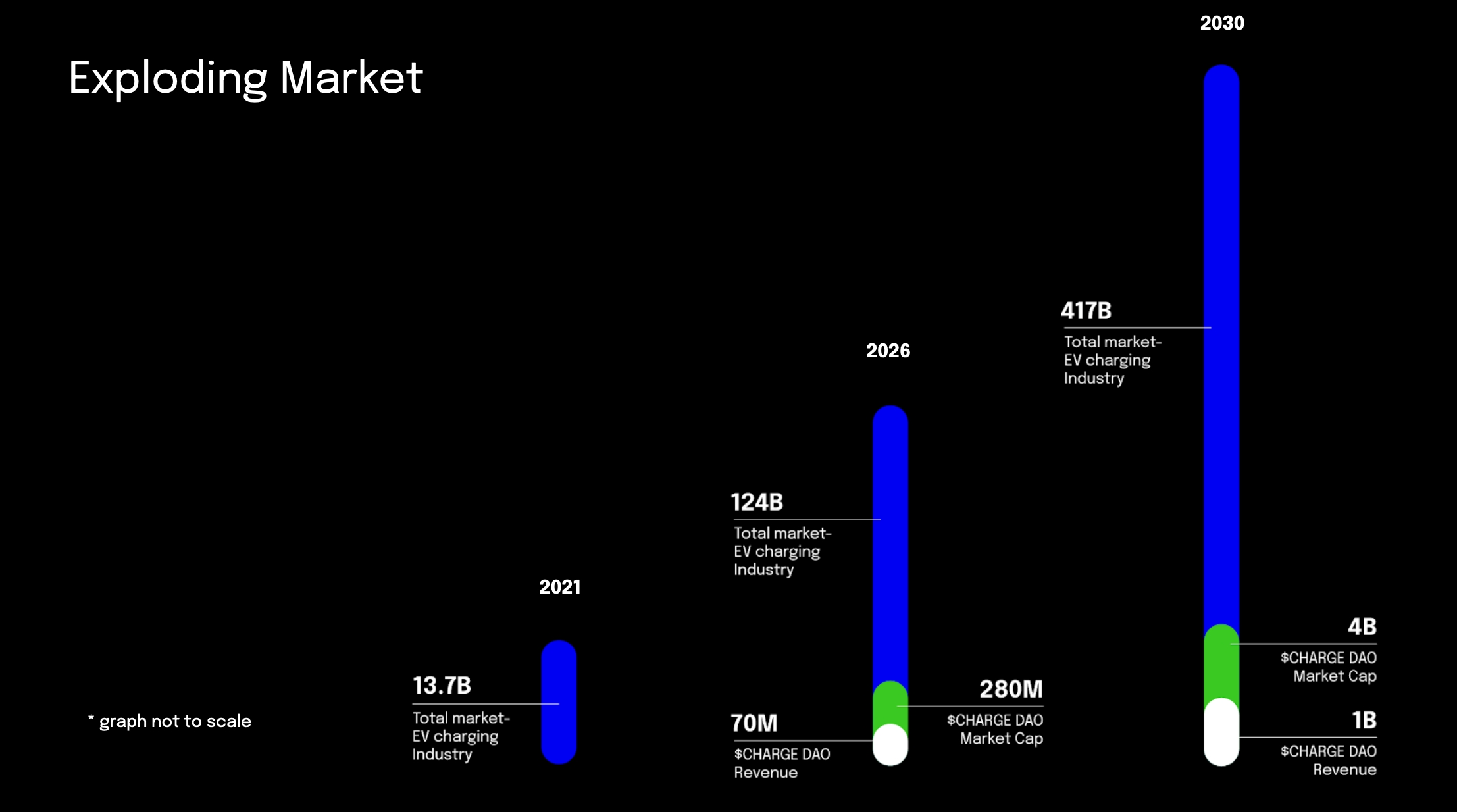The problem
This page describes the current problem with the EV charging industry
Either you own an Electric vehicle (EV) or your friend does. EVs are the future of transportation.
But the adoption of EVs is highly reliant on the EV charging infrastructure. The EV Charging industry is one of the rarest industries that is projected to grow at a rocket speed from 13.7B USD to 417B USD in just 9 years.
But the industry revolution is at a high risk of a massive slowdown because of the root level issues caused by a bad initial solution design by few existing players and intermediaries, who wanted to benefit from the chaotic situation. Few centralized major players have built isolated walled gardens constraining innovation and making it extremely challenging for builders / entrepreneurs / innovators to contribute to and benefit from the growth of this industry. As a result innovation has become very expensive and almost impossible to achieve.
To clean up the current mess, the world is currently demanding the need for a democratized and more economical way to charge their EVs because of 5 major problems plaguing the EV charging industry: 1. Permission to innovate and monetise: Currently almost all of the innovation in the EV charging industry is happening in the closed walled gardens. This situation is making it almost impossible for the innovators to collaborate with other innovators without extensive business agreements and exchange the knowledge. Furthermore, the current status quo is that external innovators cannot find ways to build products to improve the operational efficiency of the ecosystem and monetise from the existing infrastucture in a permissionless way.
2. Inefficient charging processes: There are so many stakeholders in the EV charging process such as eMSPs, CPOs, OEMs & Roaming providers. Every backend process such as financial transactions and verification of certificates happens through these intermediaries at different stages of charging, adding to the costs, delays and higher failure rates, in some cases as high as 25%.
3. Expensive: To let EV owners charge at multiple charging stations from different providers (CPOs), a new set of companies popped up called ‘roaming companies’ that connect multiple charging stations with the e-Mobility service providers (eMSPs) at expensive fixed and variable commissions. All these commissions are loaded onto the end consumer (EV owner) who pays the final bills. The entire process gets very expensive in the end. The ecosystem costs can get as high as 66.66%. Moreover, all the players who pay these commissions do not benefit from these commissions at all but just fill up the pockets of a few companies. They are users but not stakeholders. 4. Fragmented Infrastructure: EV owners must register with multiple providers to be able to charge their EV at any charging station. There are so many charging stations around but the problem is that even though charging stations exist, unlike the current gas station situation, any random EV cannot be charged at any charging station without certain registration processes. Each registration comes at a cost - financial and emotional. Because users would end up with countless accounts and charging cards to be able to charge their EVs. Imagine your wallet full of 10 roaming cards and 2 screens full of apps on your phone. Sounds clumsy. Doesn't it? This situation is happening because the charging stations and companies do not talk to each other because they are worried about profiting their competitors.
5. Slow settlements: Because of the existence of several stakeholders and poorly designed systems, once an EV owner pays at the charging station, it can take upto 4 weeks for all other stakeholders in the background to get paid.
Last updated
